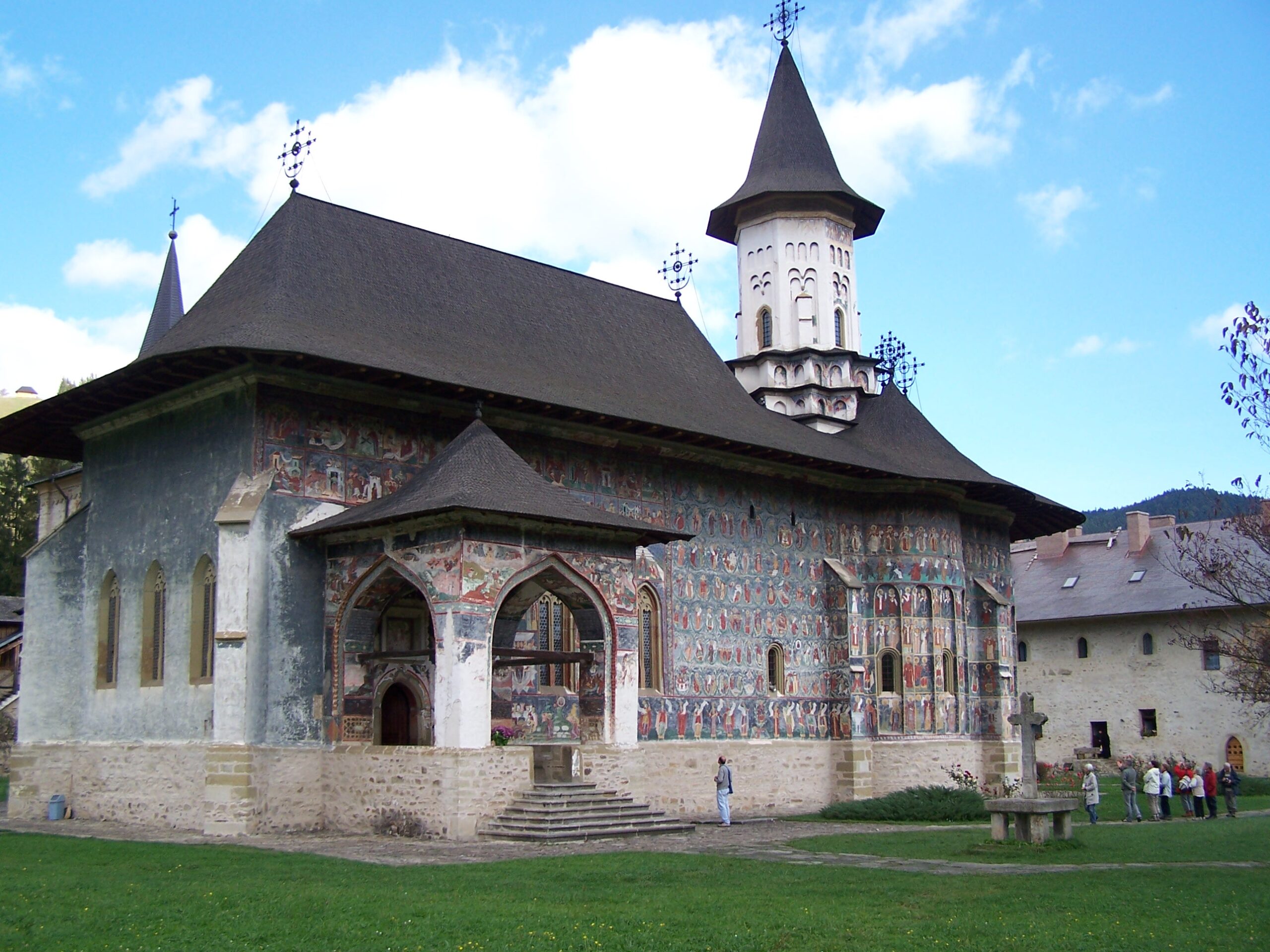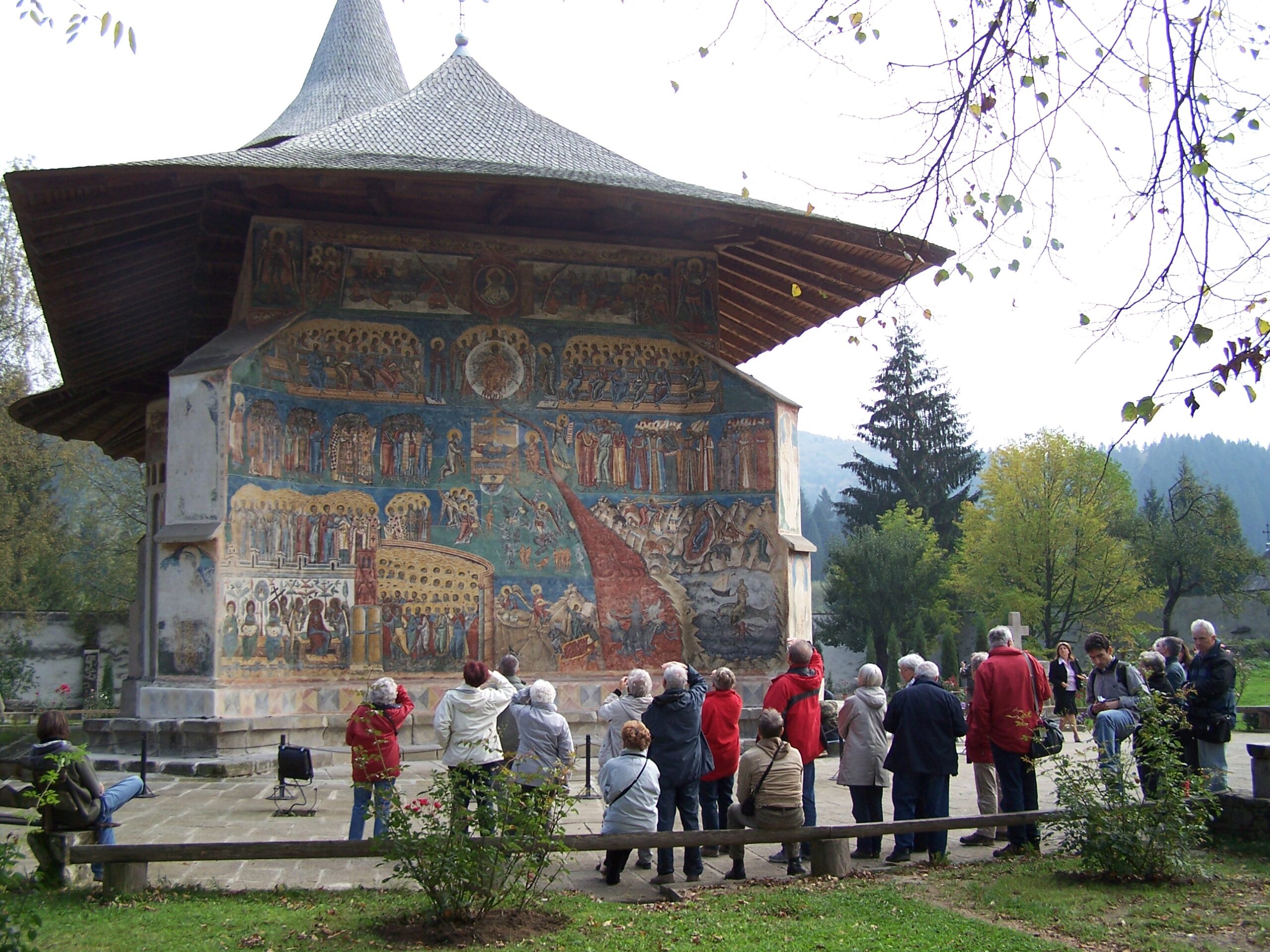
The conquest of Constantinople by the troops of Sultan Mehmet II on May 29, 1453 is the coup d’état of the Byzantine Empire, after the conquest of the Balkans and Asia Minor by the Ottoman Turks and the occupation of Crimea by the Tatars of the Golden Horde.
Little by little, dried up by the taxes imposed by the Ottoman Empire, Byzantine culture and art entered the darkness for many centuries, the Byzantine heritage being transferred especially to the Russian space.
In the second half of the 15th century, Wallachia (until 1476, after the death of Vlad the Impaler III, when Wallachia recognized itself as a vassal of the Ottoman Empire) and Moldova were among the last Orthodox territories to resist the advance of Turkish armies. In 1457, Stephen the Great, the Ruler of the Country of Moldavia, will succeed through brave fights and skilled diplomatic negotiations to withstand the invaders for 47 years. In parallel, Stephen the Great will launch an extensive program of building monasteries and churches, with Byzantine elements mixed with local elements, initiating the Moldavian style. The tradition is mentioning 40 foundations, of which only 26 are attested, along with many church objects, extraordinary embroideries, liturgical books, etc. Considerable amounts of money are allocated and the monastery workshops work with the best materials, representing a true golden age of creation in this principality.
The major objective was: the rebirth of the Byzantine spirit in Europe against the growing influence of Islam, but also of Catholicism.
It should be noted that the second wife of Stephen the Great will be Princess Maria of Mangop, a principality located in the Crimea, also named Paleologu, the last dynasty to rule the Byzantine Empire.
This legacy will be taken over in a spectacular way by the son of Stephen the Great, Petru Rares (1527-1538; 1541 – 1548), who will decide to cover the exterior walls of the churches with frescoes, for dogmatic, artistic reasons, but also political, at a time when the Ottoman invasion was becoming unstoppable.
An example is the beautiful fresco from the church of the Moldovita monastery, representing the Siege of Constantinople in 626, where the Byzantines and Persian soldiers are replaced by Moldovans and Turks. Also, the city of Constantinople strikingly resembles Suceava, the medieval capital of Moldavia, drawing a parallel between saving the Byzantine Empire and the desperate situation of Moldavia in 1537, the year when the fresco was painted, being a real call to arms and faith.

Moldovita Monastery – The Siege of Constantinople Photo credit : Pascal Garnier
This call is found in many frescoes, especially when it comes to martyrs who fell under the blows of the Turks or the Tartars. The most represented and detailed in suggestive scenes is the martyr of St. John the New (early fourteenth century), who refused to renounce the Orthodox faith in front of the Tartars and was tortured, dragged by a horse through the streets of the city and finally beheaded. He later became the protector of the city of Suceava, the relics of the Saint being brought to the church bearing his name in 1402.
And not coincidentally, the Holy Great Martyr George, who kills the dragon, the symbol for the evil that threatens the city, is chosen the protector of Moldova, being painted in all churches in the principality. Moreover, in the church from Patrauti (1487), Saint Stephen the Great called the military saints to the aid of the Moldavian army fighting for the defense of the Christian identity in front of the Turks. The unique scene in the entire Orthodox world through its iconographic composition, “Cavalcade of St. Constantine” or “Cavalcade of the Holy Soldiers”, depicts an army of military saints killed during anti-Christian persecutions. They are led by Archangel Michael and Emperor Constantine the Great, around the Holy Cross.
In the Last Judgment, presented on the entire western side of the church in the Voronet monastery, the message is as clear as can be. The rulers of Moldova, the boyars and the representatives of the Orthodox Church are painted on the side of good, with direct access to heaven, being examples to follow and leaders to listen to the whole people, while on the side of evil and condemned Turks, Tatars, Catholic Poles, Jews, or Armenians who competed commercially with Moldavian leaders, are designated as enemies or unworthy.

Voronet Monastery – Last Judgement Photo credit : Pascal Garnier
In such a difficult period, when the vast majority of the population could not read, frescoes were a powerful way of communication, the walls of the monasteries being both for defense and to raise ideological barriers to the dangerous world outside.
After 1538, when Moldova fell subjugated by the Ottoman Empire, the fever of constructions and paintings slowly died out, the last breath being the Monastery of Sucevita built between 1581 and 1606. The Byzantine spirit does not disappear and survives in a more discreet form. Today, we discover the wonders of this bygone era, unfolding before our eyes an open book recounting the history of the Moldavian people and strong to fight for freedom and faith.
By Pascal Garnier, Vice-President of Bucovina Tourism Association Romania





Follow us: